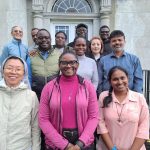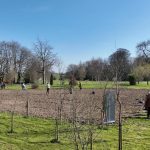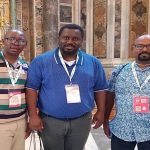Having arrived in Brazil in late October 1966, I ministered in the parish of Florida Paulista in the state of São Paulo for a total of 8 years, in Adamantina for a much shorter period and, for a while in the late 1970s, in New York where I was studying in Fordham University.
In 1980 I was appointed for the first time to the Diocese of Ji-Paraná in Rondonia, a state roughly six times the size of Ireland but with a much smaller population. At the time large tracts of land were under forest. With the asphalting of roads in the next decade, virgin forest was opened up to settlers from Brazil’s south. The production of crops such as rice and maize, which had been the mainstay of the whole region, lost its importance as rural people migrated to the towns. Larger holdings were formed, and cattle-raising grew hugely in importance. My own move to Rondonia followed a particular wave of migration of coffee-farmers and their families from São Paulo state where a ‘geada’ frost one night in 1977 had burned all the coffee plantations, the land going on to become pasture for cattle.
Both the parish and the diocese to which I was assigned had been created in the 1970s when Ji-Paraná town had a population of little more than 10,000 people. Its roads were of mud, there was little or no electricity supply or telephone coverage and basic structures were few. Today it is a modern city with a total population of about 140,000 and has good amenities. Electrification has been the motor for much change. The city has 45 schools (20% of them are private, the rest are public) and 6 universities.
While many parts of Brazil have a high rate of violent crime, Ji-Paraná is a reasonably peaceful area. Situated a little south of the equator, it has two seasons of roughly six months each. A one-hour journey in the dry season can become double that during the wet season which typically runs from October to April. The highest day-time temperatures range from roughly 20°C to 38°C all year round.
The diocese has a total of 26 parishes, each with at least one priest. Lay participation is high. There are four parishes in the town which has a cathedral, and 11 other churches or communities.
Back serving in Ji-Paraná a second time, I am now in the Cathedral Parish with Fr. José Celestino, who is parish priest and vicar general. We each have three weekend masses. Other urban churches have two masses monthly while rural communities – one some 60 miles away – typically have Mass about four times a year.
+






